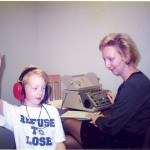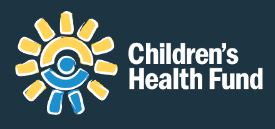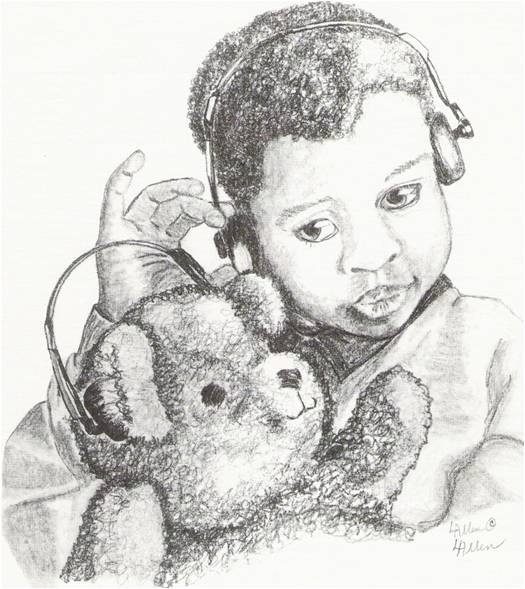Related Products
For Professionals
- Amplification
- Assessment of Student Skills, Challenges, Needs
- Early Childhood: Infants, Toddlers, Preschool
- Hearing Loss – Identification, Impact and Next Steps
- IDEA Law Summary Information
- Language and Speech Development Issues
- Legal Issues in Serving Children with Hearing Loss
- Listening (Auditory Skills) Development
- Planning to Meet Student Needs
- Self-Advocacy Skills for Students with Hearing Loss
- Self-Concept: How the Child with Hearing Loss Sees Himself
- Social Skills
- Speech Perception & Learning
Related Teacher Tools Takeout Items
Hearing Screening Resources
Tools for Training School Hearing Screening Providers!
These videos were developed based on research (Emanuel, D.C., Alterman, M., Betner, M., & Book, R. (2012). Development of a video for pure tone hearing screening in schools. Journal of Educational Audiology, 17, 62-76). A study of the original video over an 8-year period, including two doctoral thesis projects, indicated the video was as effective as live instruction but that hearing screening trainers wanted more information. So, for the past two years, Diana Emanuel of Towson University, has been working with the audiologists in the Baltimore City School System to revise the video and develop additional information, which is now available in two streaming formats: YouTube and embedded video. These links have been provided below, with permission of Dr. Emanuel (THANKYOU!). Many of the ancillary tools needed for instructions are also included (e.g., sample test items, notes). Don’t skip the second two videos (Commonly asked Questions and Common Mistakes) because there are some useful demonstrations in those!
- Pure-Tone Hearing Screening in Schools: Revised (2013 video)

- Pure Tone Hearing Screening in Schools: Common Mistakes (video)
- Pure Tone Hearing Screening in Schools: Commonly Asked Questions (video)
- Notes on screening procedure only handout on just the screening procedure only
- Sample test questions (multiple choice format)
- Practical evaluation checklist
- Useful websites
Hearing Screening in Early Childhood
Some states have mandated that hearing and vision screening occur prior to the initial evaluation for special education eligibility. Here is a site with a state-by-state list of policies related. Source: National Association of State Boards of Education.
Presentation for Early Childhood Programs: Why and How to Appropriately Screen Young Children’s Hearing
Hearing Screening in Early Childhood– This 60-slide PowerPoint presentation was developed for Coordinators of Early Childhood programs that serve toddlers and preschoolers (Minnesota, but most of the information is applies broadly). Pros and cons of different screening methods are discussed, including paper checklists, otoacoustic emissions (OAE) and pure tone hearing screening. The presentation also includes a section in which participants can experience simulated hearing loss to further their awareness and understanding of the need to identify hearing loss before child development can be compromised. You are encouraged to review the 8-page handout that accompanies the PowerPoint presentation on Hearing Screening in Early Childhood.
Guidelines for Hearing Screening After the Newborn Period to Kindergarten Age by MN EHDI, May 2019.
Using Noise Cancelling Headphones to Decrease Referral Rates
Noise cancelling headphones may be able to increase pure-tone screening test sensitivity, without compromising specificity. Noise cancelling headphones show promise as possible replacements for conventional earphones in school hearing screening programs. See article
Recommendations for Childhood Hearing Screening Practices
 An ‘oldie but goodie’ article reviewing important aspects of hearing screening, referral and follow up: Hearing Conservation in Public Schools Revisited (1991).
An ‘oldie but goodie’ article reviewing important aspects of hearing screening, referral and follow up: Hearing Conservation in Public Schools Revisited (1991).
AAA Childhood Hearing Screening Guidelines![]() 2011 – Karen Anderson, PhD chaired the subcommittee that developed this 78-page document regarding the identification of hearing loss needs for children from 6 months of age through high school. In addition to specific hearing screening protocol recommendations, the document includes background information on prevalence of hearing loss, economic and educational impacts, determining program effectiveness, and considerations for management of hearing screening programs.
2011 – Karen Anderson, PhD chaired the subcommittee that developed this 78-page document regarding the identification of hearing loss needs for children from 6 months of age through high school. In addition to specific hearing screening protocol recommendations, the document includes background information on prevalence of hearing loss, economic and educational impacts, determining program effectiveness, and considerations for management of hearing screening programs.
 Health Barriers to Learning: The Prevalence and Educational Consequences in Disadvantaged Children describes the health barriers to learning, including hearing loss, and the supporting evidence base for their impact on academic success. Health Barriers to Learning are health conditions that adversely affect a child’s performance in school. Left untreated or under-managed, the barriers can adversely affect children’s ability to see, hear and pay attention in the classroom, their ability and motivation to learn, their attendance, their academic performance, and even their chances of graduating from high school.
Health Barriers to Learning: The Prevalence and Educational Consequences in Disadvantaged Children describes the health barriers to learning, including hearing loss, and the supporting evidence base for their impact on academic success. Health Barriers to Learning are health conditions that adversely affect a child’s performance in school. Left untreated or under-managed, the barriers can adversely affect children’s ability to see, hear and pay attention in the classroom, their ability and motivation to learn, their attendance, their academic performance, and even their chances of graduating from high school.
This report was developed by the Children’s Health Fund. The report also describes the disproportionate prevalence of health barriers in disadvantaged children, the extent of unmet need for services for identification, management and treatment, and each health barrier’s impact on learning. The report also offers recommendations for better identification, management, and treatment of these barriers. It is intended for programs and advocates to use this literature review to start ready with information on why their schools or programs need certain services to optimally serve children. Children’s Health Fund is working toward becoming a national resource center for dissemination of this important information.
An Overview of OAEs and Normative Data for DPOAEs
This article was obtained from http://www.hearingreview.com/all-news/22036-an-overview-of-oaes-and-normative-data-for-dpoaes and is included on this page as a way to clarify the differences between screening and diagnostic OAE testing as OAE is becoming of increasing interest for screening young child populations.
Drawing by Laurie Allen. For those of you who are wondering, yes the top photo is of a younger Karen Anderson and her oldest son Grant (circa 1995).
